Olympus’ range of mirrorless interchangeable lens cameras currently consists of two branches. On one hand, there is the OM-D line-up which is modelled after the classic OM-1 film camera from the 1970s. On the other, we find the Pen range whose design was inspired by the original Pen F half-frame 35mm SLR cameras.
Although OM-D and Pen cameras use very similar technology, they are easily distinguishable by their design. For example, all OM-D cameras feature an electronic viewfinder inside a centrally placed hump whereas the Pen cameras either have an electronic viewfinder positioned on the left or more commonly, no viewfinder at all.
Today we’re going to be looking at the various differences between the latest additions to the OM-D and Pen range: the OM-D E-M10 III, which was announced today, and the Pen E-PL8.
Ethics statement: The information supplied in this article is based on official specifications, press releases and our personal experience with Olympus cameras. If we get the chance to test the two cameras side-by-side, we will publish a full comparison with high resolution image samples. We were not asked to write anything about these cameras, nor were we provided with any sort of compensation. Within the article, there are affiliate links. If you decided to buy something after clicking the link, we will receive a small commission. To know more about our ethics, you can visit our full disclosure page. Thank you!
1. Design and Handling
As we mentioned in the introduction, the most significant differences between OM-D and Pen cameras can be found in their design.
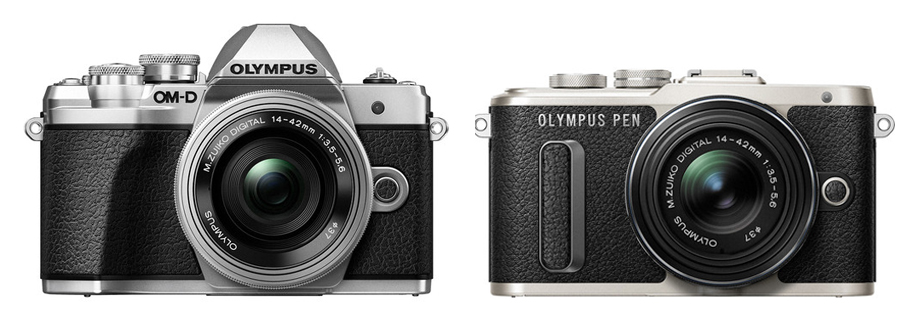
The E-M10 III looks nearly identical to its predecessor, the E-M10 II. In addition to the fake pentaprism at the centre that houses the electronic viewfinder, you’ll find a fairly substantial grip out front that helps you to hold the camera with larger lenses. It comes with twin dials to control the exposure, a mode dial, and three customisable function buttons around the body.
The Pen E-PL8 is smaller, lighter and more compact than the E-M10 III, partly because it lacks an electronic viewfinder. It too has a grip, but unlike the E-M10 III’s, it is long and rectangular in shape, protrudes from the body and is much smaller. There is one control dial instead of two and only one function button.
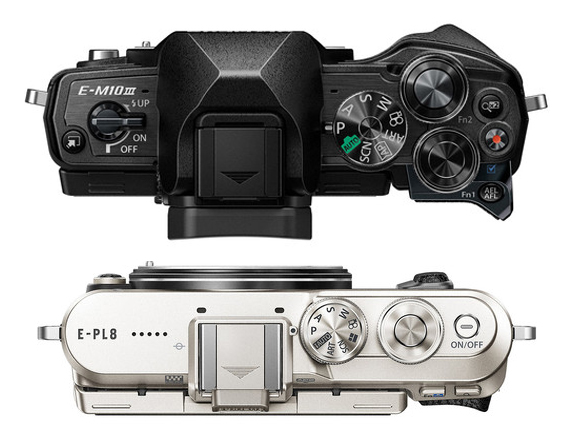
Whereas the E-M10 III only comes in black or a combination of black and silver, the E-PL8 is available in three colours: black, white or tan. Both are wrapped in an attractive faux leather covering.
Both cameras come with a hot shoe but lack weather sealing.
2. Rear LCD Screen
Both cameras feature a tilting touch sensitive LCD screen on the rear but the way in which they articulate differs.
The E-M10 III’s screen flips up by 90° for low-to-the-ground shooting and down by about 45° for high-angle shots.
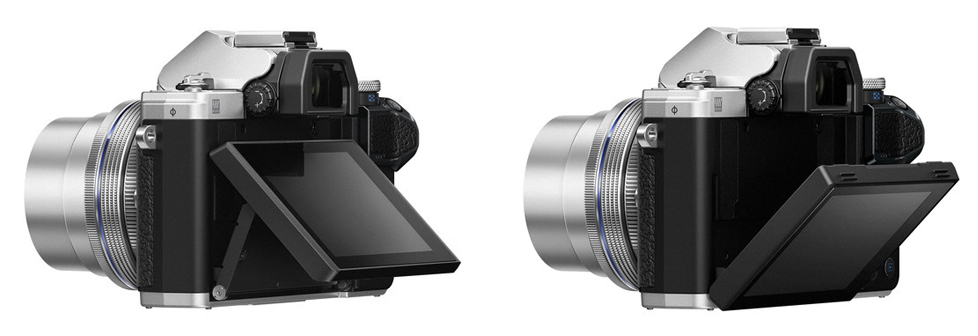
By contrast, the Pen E-PL8’s screen can tilt 80° up and 180° down. The latter is helpful for shooting self portraits.
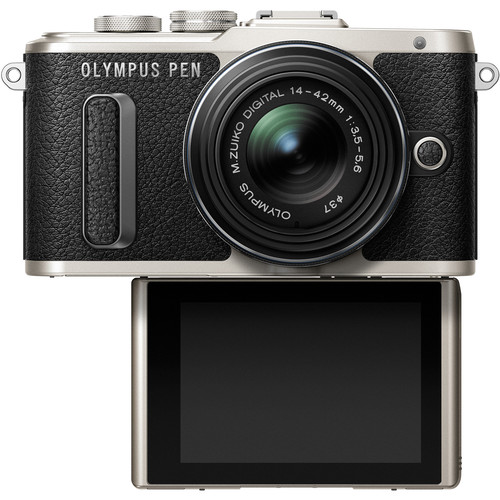
Both screens have a resolution of around 1040K and can be used to enlarge or select the AF area, swipe through and enlarge your images in playback mode, and release the shutter to take a picture.
3. Electronic Viewfinder
We already mentioned that the E-M10 III has a viewfinder while the Pen E-PL8 doesn’t, but it’s worth touching upon the former’s specifications.
The E-M10 III’s electronic viewfinder has 2360K dots, a 100% field of view, a magnification of 1.23x (0.61x) and a good eye point of 19.2mm. It is identical to the E-M10 II’s viewfinder which we found very fluid and enjoyable to use when we tested the camera two years ago.
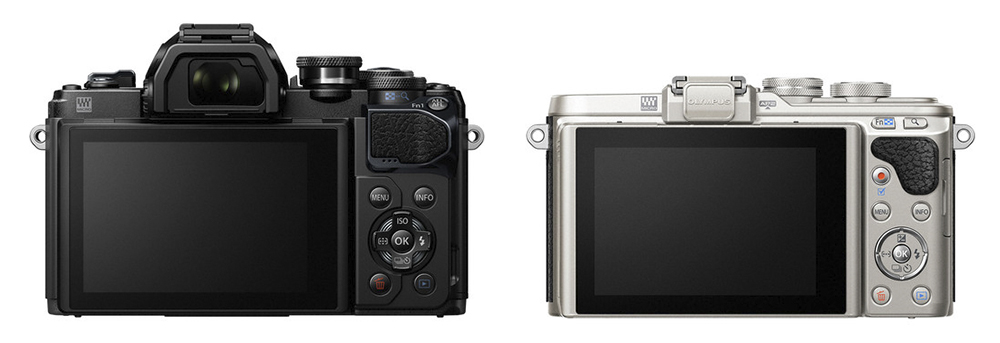
If you want to use a viewfinder on the E-PL8, your only option is to purchase an external viewfinder, such as the excellent VF-4 EVF, and attach it to the hot shoe.
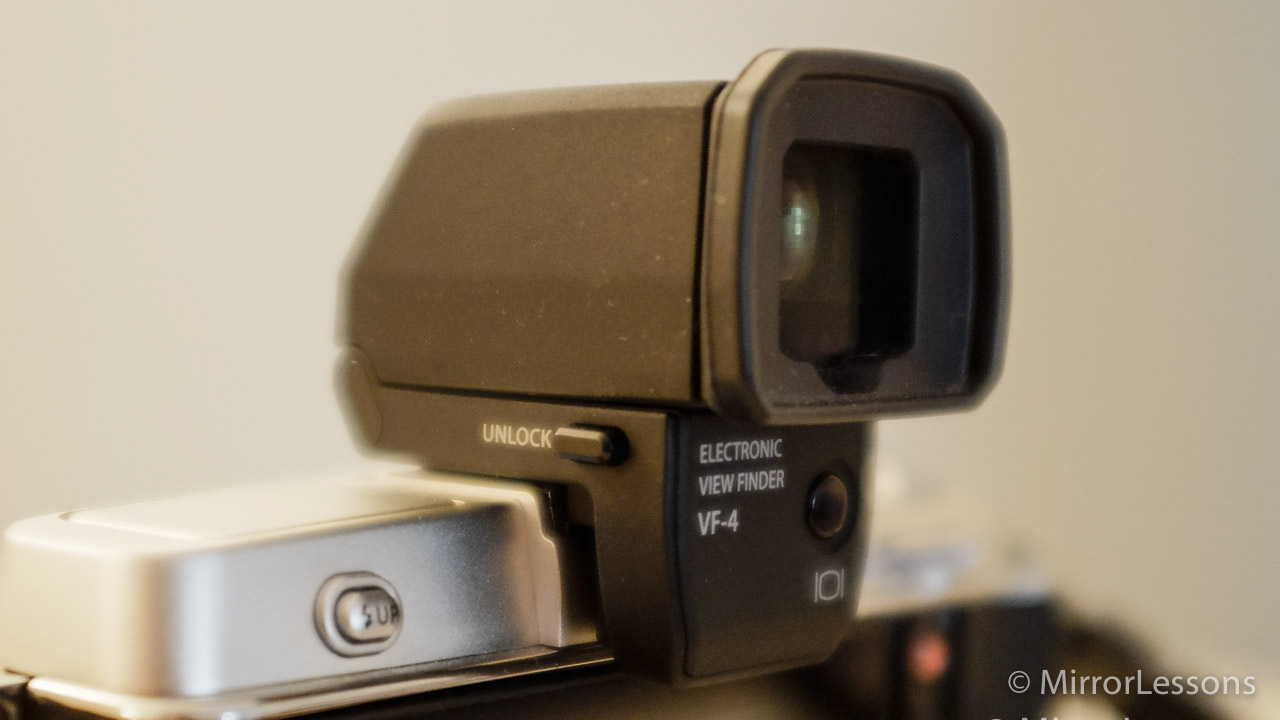
4. Autofocus System
Although both cameras utilise a contrast detection autofocus system, the number of AF points is higher on the OM-D camera.
The E-M10 III is the first entry-level model to have 121 area multi AF points whereas the E-PL8 was given the same 81 AF points as the E-M10 II.
You have the option of All target, Group target (9‑areas), Single target (normal), and Single target (small) on both cameras.
As for the various focusing options, you get Manual focus, Single AF, Continuous AF, Single AF + MF, AF Tracking and Face/Eye detection. The only difference is that the E-M10 III comes with an additional Super Spot AF mode that lets you autofocus while in magnification mode.

5. In-Body Image Stabilisation
Both cameras feature Olympus’ advanced in-body stabilisation system but with one key difference: the new E-M10 III uses 5-axis stabilisation whereas the E-PL8 only has stabilisation on 3 axes.
The effective compensation range goes up to 3.5 EV steps with the Pen camera and 4 EV steps with the OM-D (CIPA standards).
In real world terms, there isn’t a massive difference but you may notice that you can manage slightly slower shutter speeds with the OM-D camera.
For instance, when testing the E-M10 II, whose stabilisation system is identical to the E-M10 III, we were able to take shots at speeds as slow as one second. By contrast, we had trouble achieving sharp results at shutter speeds below 0.4s with the original E-M10 whose system is similar to that of the Pen E-PL8.

It is also worth noting that stabilisation works in video mode too.
6. Video Features
The E-M10 III is the first entry-level Olympus, and only the second camera in the entire range, to offer 4K recording at 30/25/24p in addition to Full HD up to 60p. It also has slow motion recording at 120fps in 720p and 4K time lapse.
The E-PL8 has much less to offer in the video department. There is the possibility to shoot at up to 1080p/30fps and as mentioned above, you can use 3-axis stabilisation with video.
Both cameras come with a built-in microphone (but no mic input), manual control, various effects and filters, and a maximum recording time of 29 minutes.
7. Advanced Photo Modes
The E-M10 III comes with a few advanced photo modes that aren’t found on the E-PL8, making it the more versatile model of the two. These include:
- Keystone Compensation: allows you to correct converging lines in-camera
- Focus Bracketing: allows you to take up to 999 shots in a quick burst at focus differentials between 1-10. You can then merge the images in post production.

The Pen E-PL8 does come with one mode the E-M10 III doesn’t, however, and that’s the Selfie Mode. It automatically activates when you flip the screen down 180 degrees and works for both stills and videos.
Both come with Live Composite, Live Bulb, HDR Backlight, Multiple Exposure, Panorama, and AE/ISO/WB/Art Filter Bracketing.

8. Flash
The E-M10 III sports a built-in pop-up flash whereas the Pen E-PL8 comes bundled with a detachable flash unit.
They both have a sync speed of 1/250s (or 1/4000s in Super FP mode) and +/‑ 3 EV flash compensation but their guide number (GN) is different: 8.2 on the new OM-D and 10 on the Pen camera.
Strangely, Olympus opted to omit the Olympus RC mode from the E-M10 III, a feature that can be found on most Olympus Micro Four Thirds cameras regardless of their target audience. The Pen E-PL8, for example, can work with 4 channels and 4 groups and uses its detachable flash to trigger other units (optical communication).
9. New Menu System and Interface
Brand new to the E-M10 III is the re-designed menu system which looks a lot like the one introduced on the E-M1 II minus a few options. Along with having a more minimalistic design, some options such as the video settings have been re-organised so that they are easier to access than before.
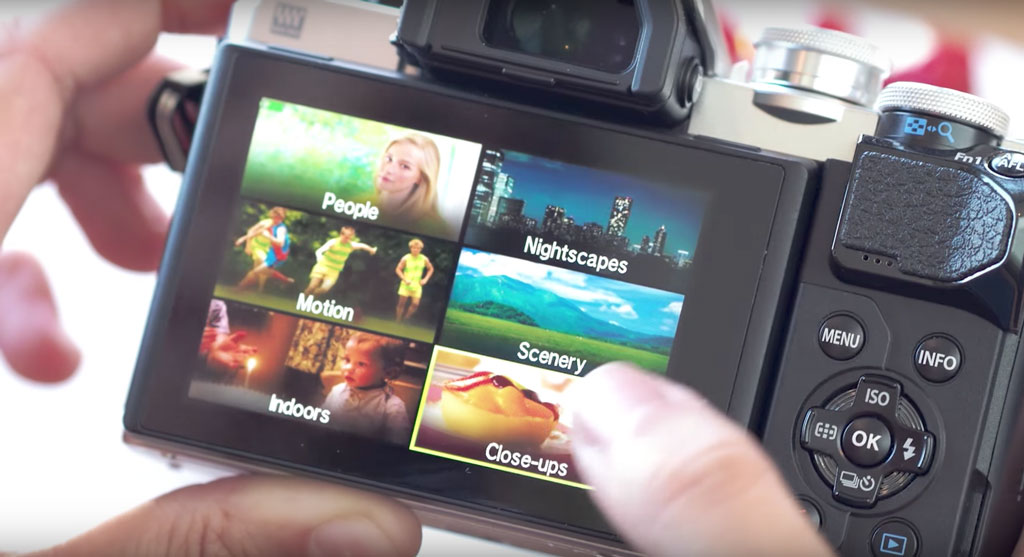
The interface of some of the shooting modes has also been updated to make it more intuitive for beginners.
On the top dial you’ll now find a new Advanced Photo mode that lets you quickly access special functions such as Live Composite, Live Bulb, Multiple Exposure, Panorama and various Bracketing modes. There is also a new shortcut button on top that lets you select settings according to the camera mode. Alternatively, you can use the touch sensitive screen to select the desired option.
10. Price
Finally we come to what is probably a big factor in your decision to choose one or the other: the price.
The E-M10 III is a brand new model and has more features on offer than the E-PL8, which explains the slightly higher retail price of $800 / £700 with the 14-42mm EZ kit lens.
Because the E-PL8 has been around for nearly a year now, you can sometimes find it for a good price on both new and used markets. With the kit lens, it is usually priced at around $650 US / £550 / €550 but can also be found for less on second-hand sites.
Bonus: Art Filters
The E-M10 II comes with one extra Art Filter in comparison to the E-PL8 called Bleaching Bypass. This filter replicates the optical effect produced by skipping the bleaching function during the processing of colour film. However, I wouldn’t be surprised if this new filter comes to the Pen camera later on via firmware update.
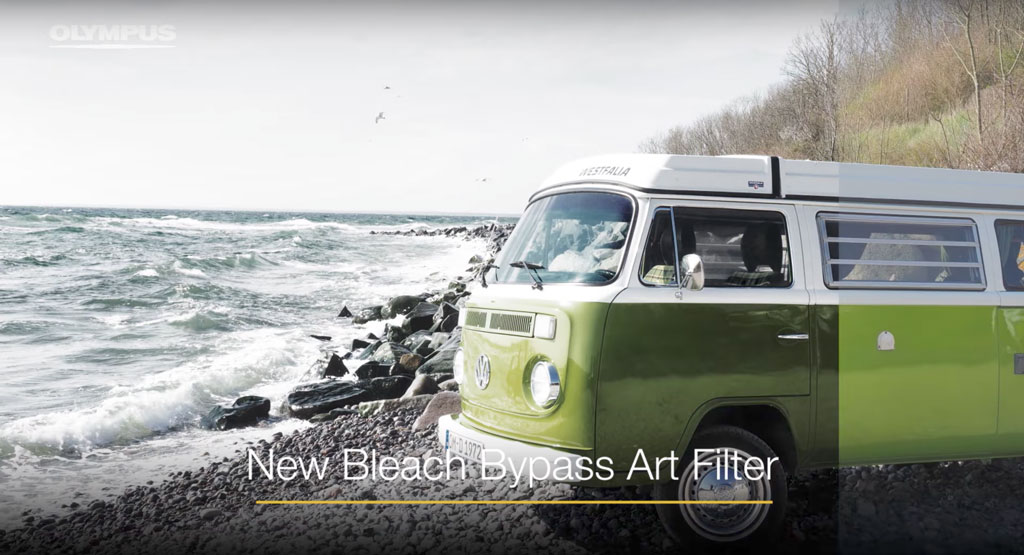
Conclusion
If your heart is set on an Olympus camera but you aren’t sure whether the OM-D or Pen line is more appropriate for your needs, the good news is that there are only a few important differences to take into consideration.
For me personally, the most important difference between the two cameras is the viewfinder (or lack thereof on the Pen). If you often have difficulty seeing the screen of your smartphone when taking a picture, you may prefer the OM-D camera as you can switch between using the rear screen and the viewfinder depending on the conditions.
Another factor you’ll want to consider is the difference in design. The E-PL8, being both smaller and lighter, can easily fit inside a jacket pocket or handbag whereas the E-M10 III will occupy more space.
Those who enjoy playing around with extra features will find that the E-M10 III has a more plentiful array of options than the E-PL8, the most important being Focus Bracketing for macro work. The only thing you might miss on the OM-D is wireless flash capabilities if you like working with off-camera flash.
Finally, there is the difference in price. If you don’t care about the viewfinder or the various extra features, there is no reason not to go for the Pen camera and put aside some money for an additional lens or accessory.
Check price of the Olympus OM-D E-M10 III on
Amazon | Amazon UK | B&H Photo
Check price of the Olympus Pen E-PL8 on
Amazon | Amazon UK | B&H Photo | eBay
You may also enjoy the following articles:
